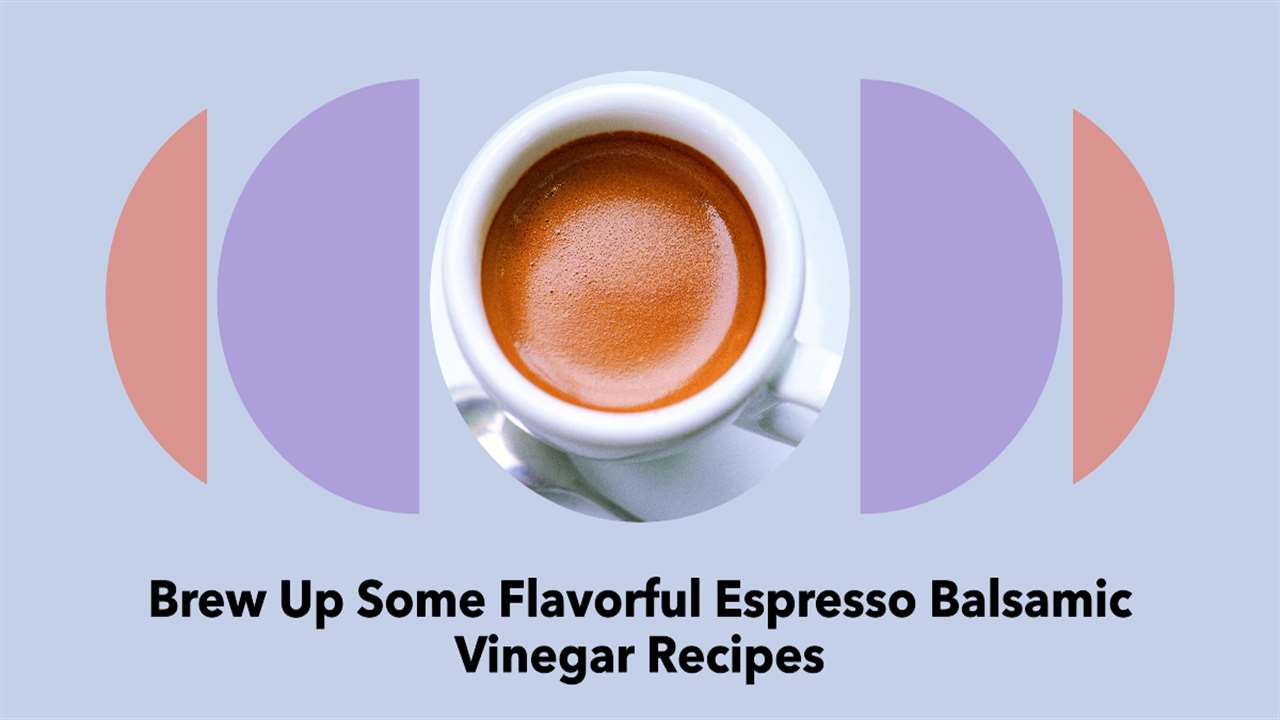Coffee aficionados and food enthusiasts alike are in for a treat as we delve into the captivating world of Espresso Balsamic Vinegar recipes. This exquisite culinary ingredient combines the bold richness of espresso with the sweet tang of balsamic vinegar, creating a harmonious symphony of flavors that can elevate both sweet and savory dishes. In this article, we’ll explore the versatility and magic of Espresso Balsamic Vinegar, share some delectable recipes, and offer tips on how to make the most of this extraordinary fusion.
The Essence of Espresso Balsamic Vinegar
Before we embark on our culinary journey, let’s first unravel the essence of Espresso Balsamic Vinegar and understand why it’s becoming a kitchen staple for creative cooks.
A Flavor Fusion
Espresso Balsamic Vinegar marries the bold and robust notes of espresso with the sweet and acidic undertones of balsamic vinegar. This fusion results in a versatile ingredient that can transform the ordinary into the extraordinary.
Versatility Unleashed
One of the most remarkable aspects of Espresso Balsamic Vinegar is its versatility. It can be used in marinades, dressings, glazes, desserts, and even beverages. The possibilities are only limited by your imagination.
The Magic of Reduction
Reducing Espresso Balsamic Vinegar intensifies its flavors and creates a syrupy consistency. This reduction, often referred to as a balsamic glaze, can add depth and complexity to a wide range of dishes.
Crafting Espresso Balsamic Vinegar
While you can purchase pre-made Espresso Balsamic Vinegar, there’s something truly special about crafting your own at home. Here’s a simple recipe to get you started:
Ingredients You’ll Need:
- 1 cup balsamic vinegar
- 2 tablespoons finely ground espresso beans
- 1/4 cup brown sugar
Step-by-Step Instructions:
1. Prepare the Espresso:
- Begin by finely grinding your espresso beans. The finer the grind, the more pronounced the coffee flavor will be in your vinegar.
2. Combine Ingredients:
- In a small saucepan, combine the balsamic vinegar, finely ground espresso beans, and brown sugar.
3. Simmer and Reduce:
- Place the saucepan over low heat and bring the mixture to a gentle simmer.
- Allow it to simmer and reduce for approximately 10-15 minutes, or until it reaches a syrupy consistency. Stir occasionally to prevent burning.
4. Strain and Cool:
- Once the reduction is complete, strain the mixture to remove any coffee grounds.
- Allow it to cool completely before transferring it to a glass bottle or container with a tight-fitting lid.
5. Store and Enjoy:
- Store your homemade Espresso Balsamic Vinegar in a cool, dark place. It can be used immediately or allowed to age for a richer flavor.
Delectable Espresso Balsamic Vinegar Recipes
Now that you have your homemade Espresso Balsamic Vinegar, let’s explore some delightful recipes that showcase its culinary prowess.
1. Espresso Balsamic Glazed Salmon
Ingredients:
- 4 salmon fillets
- 2 tablespoons Espresso Balsamic Vinegar reduction
- 1 tablespoon olive oil
- Salt and pepper to taste
- Lemon wedges for garnish
Instructions:
- Preheat your oven to 375°F (190°C).
- Place salmon fillets on a baking sheet lined with parchment paper.
- Drizzle olive oil over the fillets and season with salt and pepper.
- Brush Espresso Balsamic Vinegar reduction generously over each fillet.
- Bake for 12-15 minutes or until the salmon flakes easily.
- Garnish with lemon wedges and serve.
2. Espresso Balsamic Strawberry Salad
Ingredients:
- 4 cups fresh strawberries, hulled and halved
- 2 tablespoons Espresso Balsamic Vinegar reduction
- 1 tablespoon honey
- 1/4 cup fresh basil leaves, torn
- 1/4 cup feta cheese, crumbled
Instructions:
- In a large bowl, combine the halved strawberries and torn basil leaves.
- In a small bowl, whisk together Espresso Balsamic Vinegar reduction and honey.
- Drizzle the dressing over the strawberry and basil mixture.
- Gently toss to coat.
- Sprinkle crumbled feta cheese over the top before serving.
FAQs
Q1: Can I use instant coffee instead of finely ground espresso beans?
While instant coffee can work as a substitute, using finely ground espresso beans will provide a more authentic and robust coffee flavor.
Q2: How long can I store homemade Espresso Balsamic Vinegar?
When stored in a cool, dark place with a tightly sealed lid, homemade Espresso Balsamic Vinegar can last for several months.
Q3: Are there variations of Espresso Balsamic Vinegar?
You can experiment with different types of espresso beans or adjust the sweetness by varying the amount of brown sugar used in your recipe.
Q4: What other dishes can I enhance with Espresso Balsamic Vinegar?
Espresso Balsamic Vinegar can be used to enhance roasted vegetables, grilled meats, ice cream, and even cocktails. Let your creativity run wild!
Q5: Can I use Espresso Balsamic Vinegar in hot beverages?
While it’s typically used in cold dishes, you can certainly add a drizzle of Espresso Balsamic Vinegar to your hot espresso or coffee for a unique twist.
Conclusion
Espresso Balsamic Vinegar is a culinary treasure that brings together the boldness of coffee and the sophistication of balsamic vinegar. Crafting your own at home allows you to tailor its flavors to your liking, and the possibilities for its use in the kitchen are endless. Whether you’re enhancing a savory dish or adding a touch of elegance to a dessert, Espresso Balsamic Vinegar is sure to delight your taste buds and elevate your culinary creations to new heights. So, don your apron, start brewing, and savor the rich essence of Espresso Balsamic Vinegar in your culinary adventures.
For more ideas, recipes, and cooking tips and tricks, please visit us at Fort Morgan Food.

